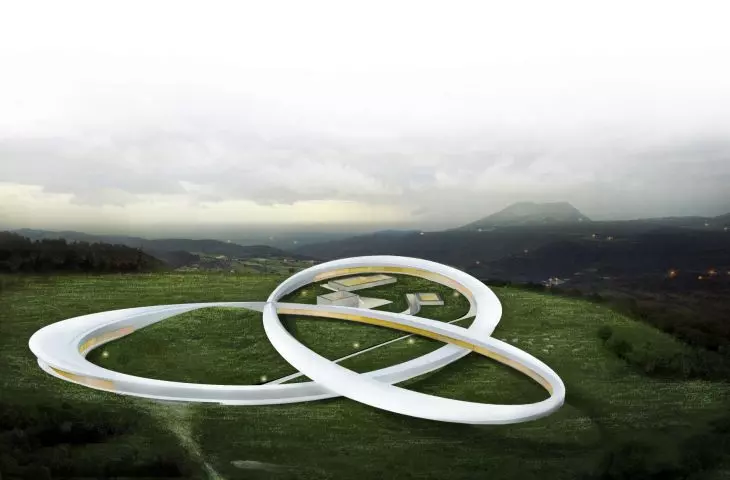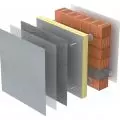The information collected on Internet user activity is a powerful resource — it is even said that personal data is the currency of the 21st century. As their volume and value grows rapidly, the challenge becomes how to store them. The international Data Landscape competition organized by the Young Architects Competitions portal sought an idea for the design of a Data Storage Center on a plot of land located in northern Italy. The futuristic concept was proposed by one of the finalists of the competition — Sławomir Szczotka.
Datacentres are the material trace of the digital world. [...] For a long time, they have been considered infrastructures rather than architectures. Yet, numerous recent experimentations show that datacentres can become landmarks of modern cities. They can be an opportunity to repurpose abandoned architectures and places that are no longer in use in an innovative way — explained the competition organizers.
A plot of land located in the pre-Alpine region of Sant'Anna D'Alfaedo in northern Italy was chosen for the site, where — embedded in the picturesque green surroundings — are the remains of a former military bunker, architecture usually seen as difficult to reuse.
situation and plan
© Slawomir Szczotka
The competition proposal, in addition to the aforementioned Data Storage Center, was to include any additional function. The competition entries were evaluated by a jury consisting of: Patrick Lüth (Snøhetta), Mats Wahlström Walter (Ateljé Ö), Jelena Vucic (BIG Bjarke Ingels Group), Fedele Canosa (Mecanoo), Enrico Frizzera (Manni Group), Gianandrea Gazzola, Samuele Tommasi (Comune di Sant'Anna d'Alfaedo), Giorgio Ventre (Università di Napoli Federico II, Apple Developer Academy), Alessandro Adamo (DEGW Lombardini 22) and Lorenzo Bottinelli (BASF).
Slawomir Szczotka's proposal, Serpentine Data Farm, which qualified for the finals, took the form of an organic ribbon that softly unfolds in three directions, while surrounding the aforementioned remains of a former military building. The low-rise building is planned so as not to dominate the surroundings, and each loop of the ribbon creates a vantage point.
visualization
© Slawomir Szczotka
The purpose of the architect's proposed facility was not only to securely store the data stored on the servers, but also to create hydroponic plant cultivation — vegetables, grains and perennials — using the heat generated by the working equipment.
How does the Serpentine work?
© Slawomir Szczotka
The oxygenated and cool air produced by the plants will be used to cool the server room, and will also power the building's ventilation — the project's author explains. — The developed system is in line with the trend of a closed-loop economy, as the waste of one process is used to feed another process, and vice versa. The principle of air circulation was used here, where warm air from the server room rises to the top and runs through ducts to the greenhouses. In the greenhouses, the cool and oxygenated air descends into filter ducts and runs to the first floor level to be further distributed throughout the building. This ecological solution, using the laws of nature, allows the building's working processes to conduct energy consumption more optimally — the architect specifies.
distribution of functions and rooms
© Slawomir Szczotka
The author's goal was to propose a model of self-sustaining farms and food banks that would provide assistance to the people of Third World countries facing hunger. The system is to be adaptable to other facilities, allowing the creation of food-generating farms on the roofs of more buildings.
sections
© Slawomir Szczotka
The systemic application of this solution in urban areas can effectively counteract the phenomenon of the so-called urban heat island, i.e. a local increase in the average temperature in urban areas, and lead to an improvement in the quality of the local microclimate — the designer adds.
visualization
© Slawomir Szczotka



















































